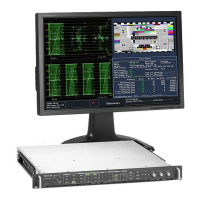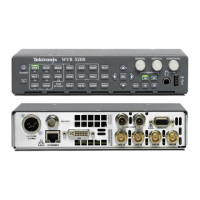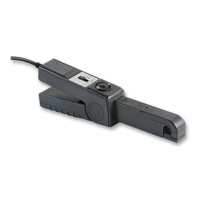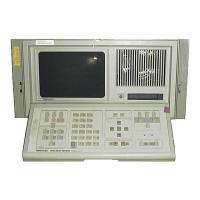General Maintenance
Table 4-2: Internal inspection check list (cont.)
Item Inspect for Repair action
Capacitors
Damaged or leaking cases.
Corroded solder on leads or
terminals.
Remove and replace
damaged circuit board.
Wiring and cables Loose plugs or connectors.
Burned, broken, or frayed
wiring.
Firmly seat connectors.
Repair or replace modules
with defective wires or
cables.
Chassis Dents, deformations, and
damaged hardware.
Straighten, repair, or replace
defective hardware.
Cleaning Procedure — Interior. To clean the waveform rasterizer interior, perform
the foll
owing steps:
1. Blow off dust with dry, low-pressure, deionized air (approximately 9 psi).
2. Remove any remaining dust with a lint-free cloth dampened in isopropyl
alcohol (75% solution) and rinse with warm deionized water. (A cotton-tipped
appli
cator is useful for cleaning in narrow spaces and on circuit boards.)
NOTE. If, after doing the above steps, a module is clean upon inspection, skip the
remaining steps.
3. If steps 1 and 2 do not remove all the dust or dirt, the waveform rasterizer
may be s pray washed using a solution of 75% isopropyl alcohol by doing
steps 4 through 6.
4. Gain access to the parts to be cleaned by removing easily accessible shields
and panels.
5. Spray wash d irty parts with the isopropyl alcohol and wait 60 seconds for the
majority of the alcohol to evaporate.
6. Dry all parts with low-pressure, deionized air.
Lubrication. There is no periodic lubrication required for the waveform rasteriz er.
4–4 WVR6020, WVR7020, and WVR7120 Waveform Rasterizers Service Manual

